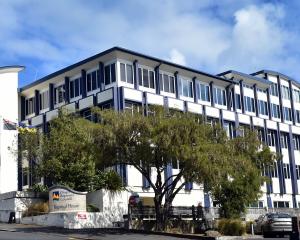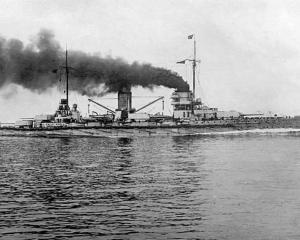
Hayley Stent (24), a PhD candidate in the University of Otago department of pharmacology and toxicology, has won the 2021 Otago Medical School Research Society’s annual science-writing essay competition.
It is the second time she has won it. The first time was in 2019, when she was a bachelor of science with honours student in the department, with her essay titled ‘‘Less Animal Testing and More Hope for Spinal Cord Injury Research’’.
The contest encourages Otago health science students to communicate with a general readership about their research. Miss Stent’s 2021 essay is titled ‘‘What Secrets Does Fish Muscle Hold?’’
From humans to chickens, cows to fish and mice to frogs, one thing we all have in common is the way we move.
The driving force behind that movement is muscle.
Though the major building blocks of muscle are the same, they are put together in a slightly different way when we compare mammals, birds and fish.
Skeletal muscle growth is fairly well understood in humans and other mammals.
We know that there are two main ways that muscle grows.
One way is where the muscle cells continue to divide and produce more cells, though this rarely happens in humans after birth.
The other way is where the existing muscle cells grow larger, which is how children grow and bodybuilders get their on-stage physique.
But there are so many other species out there that grow muscle differently to humans.
For example, fish are able to continue producing new muscle cells for a long time after they hatch, and in some cases, into adulthood where the fish continue to grow in size.
How are they able to do this when we humans cannot?
Despite the research that has been done, we still do not know how these feats of muscle growth occur.
This made me wonder: do fish hold the key to unlocking the secrets of continued muscle cell production?
My PhD research investigates how the muscle cells and connective tissue within fish muscle change with age in a fast-growing and slow-growing fish species.
The connective tissue is the non-cellular part of muscle and creates the environment for the muscle cells and influences their actions.
I am doing this research to find potential components of fish muscle that could be contributing to the continued cell production.
I have found there are different patterns between the fish species.
The fast-growing fish grow through producing lots of little muscle fibres throughout their lives, while the slow-growing fish grow through increasing the size of their muscle fibres.
I have also discovered that there are changes in the connective tissue of the muscle.
We are now investigating the impact of individual connective tissue components on fish muscle cells which are grown in an artificial environment in the lab.
If we are able to show that these components influence how the muscle cells increase in number or size and drive the continuous cell production seen in adult fish, we could use this information in biomedical research.
How can this help biomedical research advance?
Well, the time has come when we can actually grow body parts in the lab. Yes, the future is here.
We are not quite at the stage where we are growing whole organs and implanting them in people, but we are actually able to grow pieces of tissue in the lab and keep them alive.
This is thanks to a field of research called regenerative medicine which aims to engineer healthy tissue to replace, improve or restore diseased tissue in patients.
One of the major issues in human muscle engineering is growing the muscle cells in a way that promotes both the division of the cells and their increase in size.
If my findings from fish show that there are connective tissue components that are important, we may be able to influence human muscle cells in a similar way.
This would mean better engineered human muscle to replace muscle that is lost in individuals that suffer from diseases such as muscular dystrophies.
The benefits of my research could extend beyond tissue engineering and into many other fields of research.
Fish is a very popular source of dietary protein and there is a big demand for it.
If components of connective tissue influence the growth of fish muscle, this information can be used in aquaculture (fish farming) to ensure efficient production of high-quality fish.
A further use of this information is in the field of cellular agriculture, where cuts of meat are grown in the lab to limit further harm to the environment from agriculture and fishing.
My research into fish could change how scientists approach muscle engineering and vastly improve the treatment for people with muscle diseases.
We could also advance the production of farmed and lab fish meat using the information.
With my research, I am hoping to deduce what secrets fish muscle holds that could help us build muscle for medicine and food in the future.











